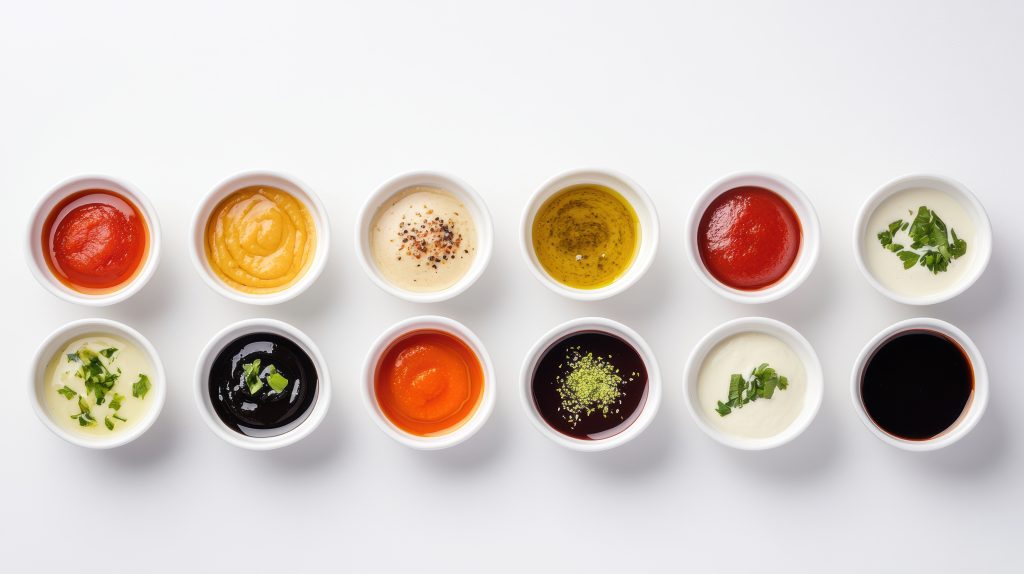The growing demand for clean-label, minimally processed foods has placed emulsified food systems, like dressings and sauces, under new scrutiny. These oil-in-water (o/w) emulsions are susceptible to lipid oxidation, a key degradation process that alters flavor, color, nutritional value, and safety.
As synthetic antioxidants lose favor, natural alternatives such as tocopherols, polyphenols, and plant extracts are becoming key players in the food industry. These natural antioxidants in emulsified food systems do more than extend shelf life; tocopherols in food support cleaner labels and align with sustainability-focused product development.
Understanding emulsified food systems and their susceptibility to lipid oxidation
Emulsified foods are usually oil-in-water emulsions, oil droplets dispersed in an aqueous phase, stabilized by emulsifiers. Emulsified food system examples include vinaigrettes, mayonnaises, and cream-based sauces. Their micelle structure increases the surface area where oxidation can occur, making emulsions particularly prone to degradation. The lipid oxidation process is complex and is often initiated at the oil–water interface, where pro-oxidant agents such as light, heat, oxygen, and metal ions interact with unsaturated fatty acids.
Unlike bulk oils, emulsified systems create unique oxidative environments due to their heterogeneous structure. The interface, where the aqueous and lipid phases meet, becomes the critical zone for antioxidant action. Oxidation of fats in these regions can lead to rancid flavors, undesirable odors, and the formation of potentially toxic secondary products.
To maintain quality and ensure consumer safety, especially in products with a long shelf life, the incorporation of effective antioxidants is essential. Natural antioxidants in emulsified food systems offer a promising path forward, but their efficacy is influenced by various parameters, including their chemical structure, polarity, and interfacial behavior.
Natural antioxidants in emulsified food systems: tocopherols, polyphenols, and plant extracts
Tocopherols, notably alpha- and delta-tocopherol, are lipid-soluble compounds with well-documented antioxidant activity and nutritional benefits as vitamin E. Their effectiveness in emulsions is closely tied to their distribution within the emulsion, especially at the interface. Delta-tocopherol, for instance, has shown higher antioxidant efficiency in emulsions due to its preferential interfacial localization [1].
Polyphenols, such as flavonoids (quercetin, catechin), phenolic acids (caffeic, ferulic, gallic), and other plant-derived compounds, are another important class. Their antioxidant action depends on their molecular structure, polarity, and the environmental conditions of the emulsion, including pH and presence of metal ions. Some, like quercetin, exhibit strong antioxidant behavior, especially in emulsified systems, where their hydrophilic groups allow for effective positioning near the oil droplet surface [2].
Plant extracts rich in flavonoids and phenolic acids exhibit strong antioxidant activity in emulsions, partly due to synergistic interactions among their components. A particularly effective synergy has been observed between tocopherols and ascorbic acid (vitamin C). In emulsified systems, ascorbic acid can regenerate oxidized tocopherol radicals back to their active form [3]. This interaction not only enhances the antioxidant efficiency of tocopherols at the o/w interface but also contributes to extended protection against lipid oxidation. Such regenerative cycles highlight the potential of combining antioxidants with complementary redox properties to achieve greater stability in emulsified food products.
Factors influencing the effectiveness of natural antioxidants in emulsified food systems
Several factors affect how antioxidants perform in emulsified food matrices. These include:
- Polarity: the “polar paradox” suggests that polar antioxidants are more effective in nonpolar environments (like bulk oils), while nonpolar antioxidants may work better in emulsions. However, this concept has limitations, and recent research emphasizes the importance of interfacial concentration rather than polarity alone.
- pH and metal ions: acidic conditions in the aqueous phase can increase the interfacial concentration of certain phenolic acids, enhancing their antioxidant potential. However, in the presence of metal ions, these same compounds may act as pro-oxidants by promoting radical formation.
- Emulsifier type and droplet size: emulsifiers influence the distribution and orientation of antioxidants. High-molecular-weight emulsifiers like proteins create thicker interfacial layers, which can offer better protection, hindering free radical penetration. Smaller droplet sizes increase surface area and may accelerate oxidation, but they also improve antioxidant access to reactive zones.
- Antioxidant synergy: blends of antioxidants with different solubility profiles and molecular structures can regenerate one another, improve interfacial stability, and deliver superior oxidative protection.
Application of natural antioxidants in emulsified food systems: clean-label dressings and sauces
The move toward clean-label formulations demands the replacement of synthetic additives with natural alternatives that offer both performance and label appeal. Natural antioxidants like tocopherols and plant phenolics are increasingly used in dressings and sauces to maintain product stability without compromising consumer expectations.
These natural solutions are particularly valuable in oil-rich emulsions, where oxidation can rapidly degrade sensory and nutritional properties. Properly selected and combined, natural antioxidants can stabilize emulsions through strategic positioning at the interface and through molecular interactions that amplify their effects.
As food manufacturers increasingly turn to nature-derived ingredients to meet consumer and regulatory demands, the synergy between natural antioxidants becomes a key advantage. This is where Btsa’s Tocobiol® Blends stand out. Derived from the distillation of non-GMO vegetable oils, these blends combine natural tocopherols with synergistic compounds, such as vitamin C, propyl gallate, lecithin, or rosemary extract, enhancing antioxidant efficacy in emulsified systems.
Tocobiol® Blends not only improve shelf life and maintain product integrity in dressings and sauces but also align with clean-label and sustainability goals. Thanks to our experience and innovation in natural antioxidants, manufacturers across more than 40 countries benefit from tailored solutions that protect both product quality and brand reputation.
Sources
[1] Wang L, Yu X, Geng F, Cheng C, Yang J, Deng Q. Effects of tocopherols on the stability of flaxseed oil-in-water emulsions stabilized by different emulsifiers: Interfacial partitioning and interaction. Food Chem. 2022 Apr 16;374:131691. doi: 10.1016/j.foodchem.2021.131691.
[2] Škerget M, Kotnik P, Hadolin M, Hraš A, Simonič M, Knez Z. Phenols, proanthocyanidins and their antioxidant activities. Food Chemistry. 2005; 89: 191-198. doi:10.1016/j.foodchem.2004.02.025.
[3] Filip V, Hradkova I, Šmidrkal, J. Antioxidants in Margarine Emulsions. Czech Journal of Food Sciences. 2009;27:S9-S11. doi:10.17221/1089-CJFS.

